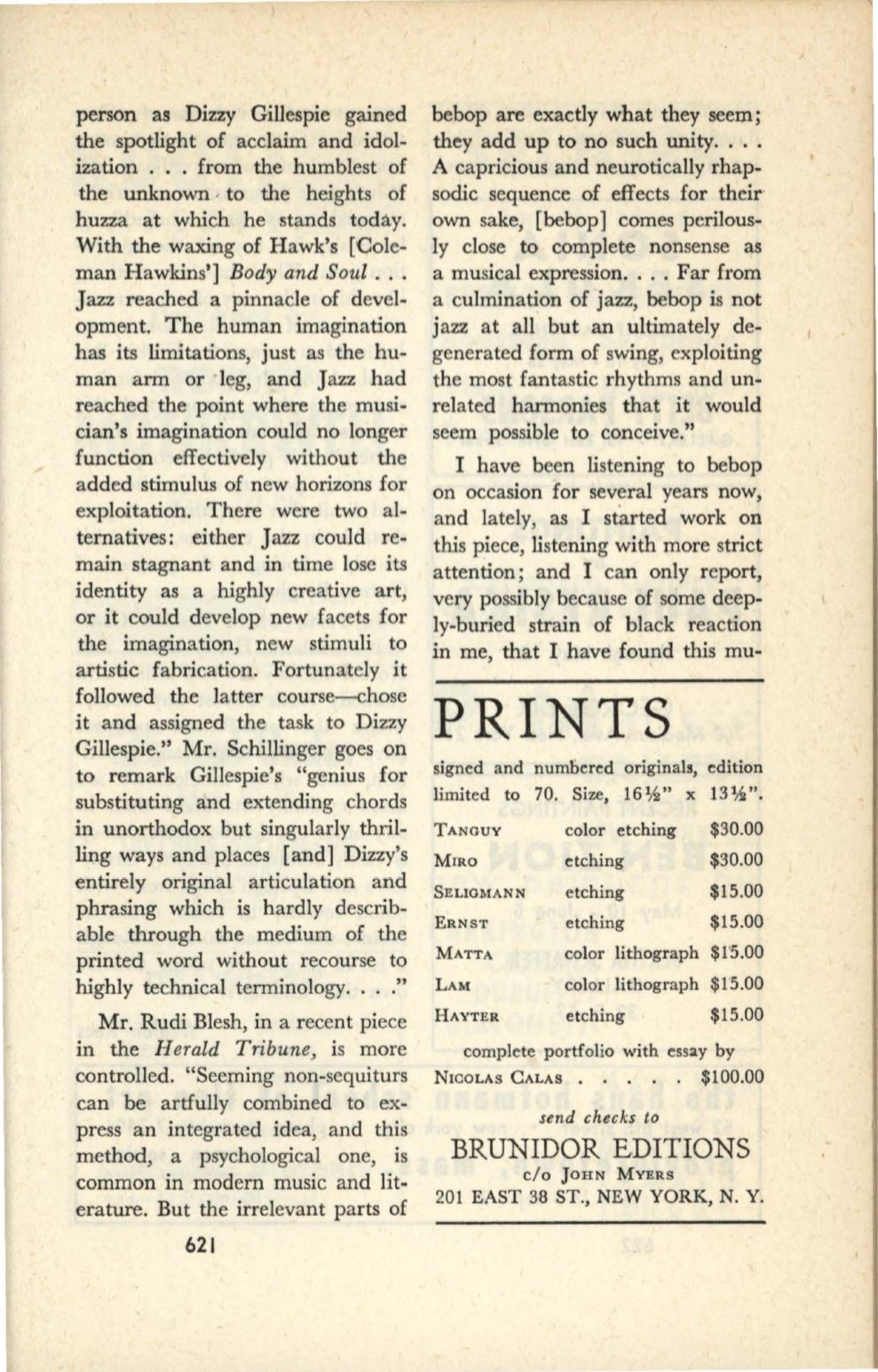
person as Dizzy Gillespie gained
the spotlight of acclaim and idol–
ization . . . from the humblest of
the unknown · to the heights of
huzza at which he stands today.
With the waxing of Hawk's [Cole–
man Hawkins']
Body and Soul ..
.
Jazz reached a pinnacle of devel–
opment. The human imagination
has its limitations, just as the hu–
man arm or ·leg, and Jazz had
reached the point where the musi–
cian's imagination could no longer
function effectively without the
added stimulus of new horizons for
exploitation. There were two al–
ternatives: either Jazz could re–
main stagnant and
in
time lose its
identity as a highly creative art,
or it could develop new facets for
the imagination, new stimuli to
artistic fabrication. Fortunately it
followed the latter course--chose
it and assigned the task to Dizzy
Gillespie." Mr. Schillinger goes on
to remark Gillespie's "genius for
substituting and extending chords
in unorthodox but singularly thril–
ling ways and places [and] Dizzy's
entirely original articulation and
phrasing which is hardly describ–
able through the medium of the
printed word without recourse to
highly technical terminology. ..."
Mr. Rudi Blesh, in a recent piece
in the
H erald Tribune,
is more
controlled. "Seeming non-sequiturs
can be artfully combined to ex–
press an integrated idea, and this
method, a psychological one, is
common in modern music and lit–
erature. But the irrelevant parts of
621
bebop are exactly what they seem;
they add up to no such unity....
A capricious and neurotically rhap–
sodic sequence of effects for their·
own sake, [bebop] comes perilous–
ly close to complete nonsense as
a musical expression.... Far from
a culmination of jazz, bebop is not
jazz at all but an ultimately de–
generated form of swing, exploiting
the most fantastic rhythms and un–
related harmonies that it would
seem possible to conceive."
I have been listening to bebop
on occasion for several years now,
and lately, as I started work on
this piece, listening with more strict
attention; and I can only report,
very possibly because of some deep–
ly-buried strain of black reaction
in me, that I have found this mu-
PRINTS
signed and numoered originals, edition
limited to
70.
Size,
16
'il "
x
13%".
TANGUY
color etching
$30.00
MIRO
etching
$30.00
SELIGMANN
etching
$15.00
ERNST
etching
$15.00
MATTA
color lithograph
$1'5.00
LAM
color lithograph
$1'5.00
HAYTER
etching
$15.00
complete portfolio with essay by
NICOLAS GALAS . . . . .
$100.00
send checks to
BRUNIDOR EDITIONS
c/o JoHN MYERS
201
EAST
38
ST., NEW
YORK,
N.
Y.


